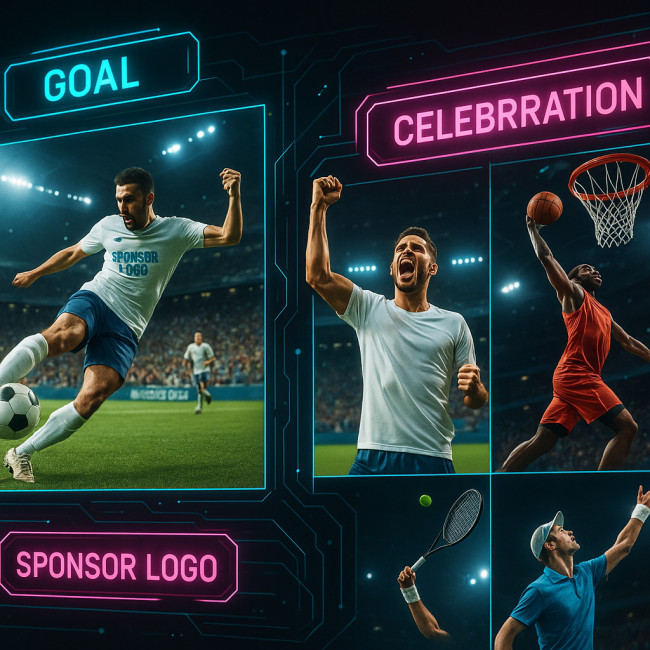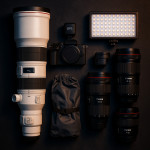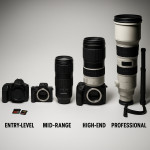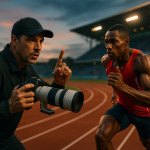AI tagging for action shots: boost directory discovery and archive value
Speed matters when recruiters hunt for the perfect sports image. Automated AI tagging turns chaotic bursts of action shots into a searchable goldmine, lifting your portfolio in directories and extending the commercial life of every frame. This guide shows you how.
Why AI-powered tags are game-changing for sports photographers

Action photography produces thousands of high-speed frames per event. Without accurate metadata, those files vanish in hard drives instead of converting into bookings. AI tagging instantly labels athletes, kit colours, brands and even emotions like “celebration”—keywords that recruiters already type into directory search bars. The result: higher placement in sports photographer directory searches and faster licensing deals long after the final whistle.
Core benefits at a glance
- Time saved: Tag 1 000 images in minutes, not hours.
- Discovery boost: Rich metadata surfaces your work in directory filters for sport, location and brand.
- Archive ROI: Quickly retrieve legacy shots when sponsors request throwback content.
- Client trust: Clear, consistent tags reassure agencies of professional workflow standards.
How AI tagging works under the hood
Computer-vision models trained on millions of play-by-play frames detect and label:
- Entities – player names, jersey numbers, team logos.
- Actions – “slam-dunk”, “tackle”, “serve”.
- Context – stadium name, weather, crowd size.
- Technical data – shutter speed, focal length and ISO auto-pulled from EXIF.
Results feed directly into your DAM or cloud library, where you can batch-approve or fine-tune tags before pushing images live.
Setting up a streamlined AI tagging workflow
1. Capture & ingest
Shoot tethered when possible so files land directly in a watched folder. AI services such as Lightroom's Smart Tags, Capture One plug-ins or cloud APIs monitor that folder 24 / 7.
2. Auto-tag pass
AI analyses each file, assigning confidence scores. Tags above a 90 % threshold flow straight into your metadata; anything lower is flagged for review.
3. Human spot-check
Spend minutes, not hours, verifying critical identifiers (athlete names, sponsor logos) before publishing.
4. Sync to directories
Push finished files to your profile and ensure field mapping matches directory filters. For example, the “action” field in your DAM should sync with the “Moment” filter inside Artfolio.
Boost directory discovery with smarter tags
Directories rank images using a mixture of recency, engagement and keyword relevance. AI tagging influences the latter two heavily.
- Relevance: Tags like “gold-medal-moment” help recruiters narrow searches to decisive winning shots.
- Engagement: When scouts find exactly what they need fast, they stay on your page longer—an algorithmic plus.
Complement your AI tags with profile-level tweaks from guides such as optimise your photographer directory profile and location cues outlined in geo-tagged portfolios boost visibility.
Case study: a weekend tournament
A freelance shooter uploaded 2 400 frames from a youth football cup. AI tagging finished in 11 minutes. Within 48 hours the gallery generated three licensing enquiries, beating his previous manual-tagged uploads by a week.
Extend the commercial life of your archive
Sports brands regularly mine past seasons for “flashback” social posts. AI-enhanced archives let you:
- Respond to briefs faster with keyword searches like “2022 ‑ winter ‑ snowboard crash”.
- Upsell evergreen content — halftime crowd reactions, coach pep-talks—often overlooked in real-time edits.
- License globally by translating tags; modern APIs output multilingual keywords that improve international reach.
For a deeper dive into metadata strategy, review metadata that matters. While focused on architecture, the tagging hierarchy principles are identical.
Manual vs AI vs Hybrid: which approach pays off?
| Method | Average time to tag 1 000 images | First-year cost (USD) | Estimated accuracy |
|---|---|---|---|
| Manual only | 8 hours | 0 (but labour intensive) | 97 % with experienced editor |
| AI only | 10 minutes | 600 (API fees) | 88 % |
| Hybrid (AI + spot-check) | 1 hour | 800 (API + editor) | 99 % |
Implementation best practices
- Define a taxonomy first. Stick to consistent verbs (“dunk”, “spike”), nouns and location formats.
- Choose a model trained on sports data. Generic vision models mislabel niche equipment.
- Keep lighting & angles consistent. AI accuracy drops 12 % when faces are half-obscured—burst mode isn't an excuse for messy framing.
- Audit quarterly. Export tag reports and compare against search queries in your directory analytics.
Common pitfalls and how to avoid them
- Over-tagging: More than 20 keywords per image can dilute search relevance. Prioritise top five.
- Ignoring privacy: Blur minors' faces or set usage restrictions before bulk uploading.
- Forgetting licensing terms: Sync tags to usage rights; mark editorial-only shots clearly to prevent client disputes.
Coming soon: smarter, context-aware tagging
Next-gen models will recognise tactical patterns—think “counter-attack” or “pick-and-roll”—opening niche monetisation paths. Stay ahead by keeping your dataset clean; models learn from your archive.
Quick self-check: are your tags directory-ready?
FAQ
- Does AI tagging replace human photo editors?
- No. AI handles bulk labelling, but humans still verify key details and contextual nuance.
- Is AI tagging cost-effective for small photographers?
- Yes. Entry-level plans start around USD 50 / month and pay for themselves once a single extra licensing deal closes.
- Will AI misidentify trademarked logos?
- Occasionally. Keep a manual review step for brand-sensitive elements to avoid infringement claims.
- How do I export tags into directory-friendly fields?
- Use CSV or XMP sidecar files and map columns to the directory's import template—usually “keyword”, “location”, “event” and “action”.
Take action today
Ready to turn last weekend's rapid-fire frames into a perpetual revenue stream? Start a hybrid AI tagging trial, tighten your taxonomy and update your portfolio. Your next recruiter search could surface a shot you forgot you captured.











